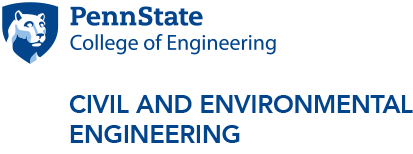Connecting River Patterns with Watershed and Landscape Processes
Abstract
The Critical Zone (CZ) is defined as the area on the Earth that spans from the bottom of groundwater limits up to the tops of trees and is where hydrosphere, biosphere and atmosphere interact. These interactions sustain life and offer many important ecosystem services including water quality, ecosystem nutrition and much more. As water moves through the CZ landscape, it fuels a variety of biotic and abiotic processes, is stored as soil and groundwater and/or exits through streams and rivers. Each of these interactions impart a signature on water composition, thus streams and rivers can serve as an integrated signal of the complex and coupled processes on land. However, disturbances related to the Anthropocene impact the CZs capacity to sustain life sustaining services with strong effects on streams and rivers. In this presentation, we combine examples of how processes on land (and within the CZ) can impact stream and river water quality as indicated by solutes, sediments, and other components, and how in turn, streams and rivers can signal shifts in CZ health.
Combining data-based investigation of patterns across the continental United States with process investigation at specific sites and in targeted regions can offer pieces to the puzzle. We will offer examples of how changes in precipitation patterns and composition can impact processes at the micros scale that show up as a regional pattern as well as how different CZ components relate to water quality metrics.
Bios
Dr. Julia Perdrial is an associate professor at the University of Vermont in the Department of Geography and Geosciences. She completed her Ph.D. at the Center of Geochemistry at University of Strasbourg in France and was a Post-Doc at the Arizona Critical Zone Observatory in Tucson. Her work is interdisciplinary and focuses on how disturbances and Critical Zone characteristics interact to impact stream and river water quality. She collaborates with data and domain scientists to investigate patterns in data and connect these to biogeochemical processes in an iterative fashion.
Dr. Diana Karwan is an associate professor at the University of Minnesota in the Department of Forest Resources and current the Director of Graduate Studies for the Water Resources Science program. She completed her Ph.D. at the Yale School of Forestry and Environmental Studies and was a Post-Doc at the Stroud Water Research Center and University of Delaware focused on the Christina River Basin CZO. She also was an NSF Earth Sciences Postdoctoral Fellow focused on cross-CZO work. She is an advocate for and practitioner of team science. With many exciting collaborators, her work focuses on the movement of fine sediments in CZ and watershed systems including how they facilitate the movement of carbon, phosphorus, nutrients, metals, and harmful prion-based diseases. Through this work she also studies the influence of forests and vegetation on water quality across urban and rural systems.
Event Contact: Li Li



